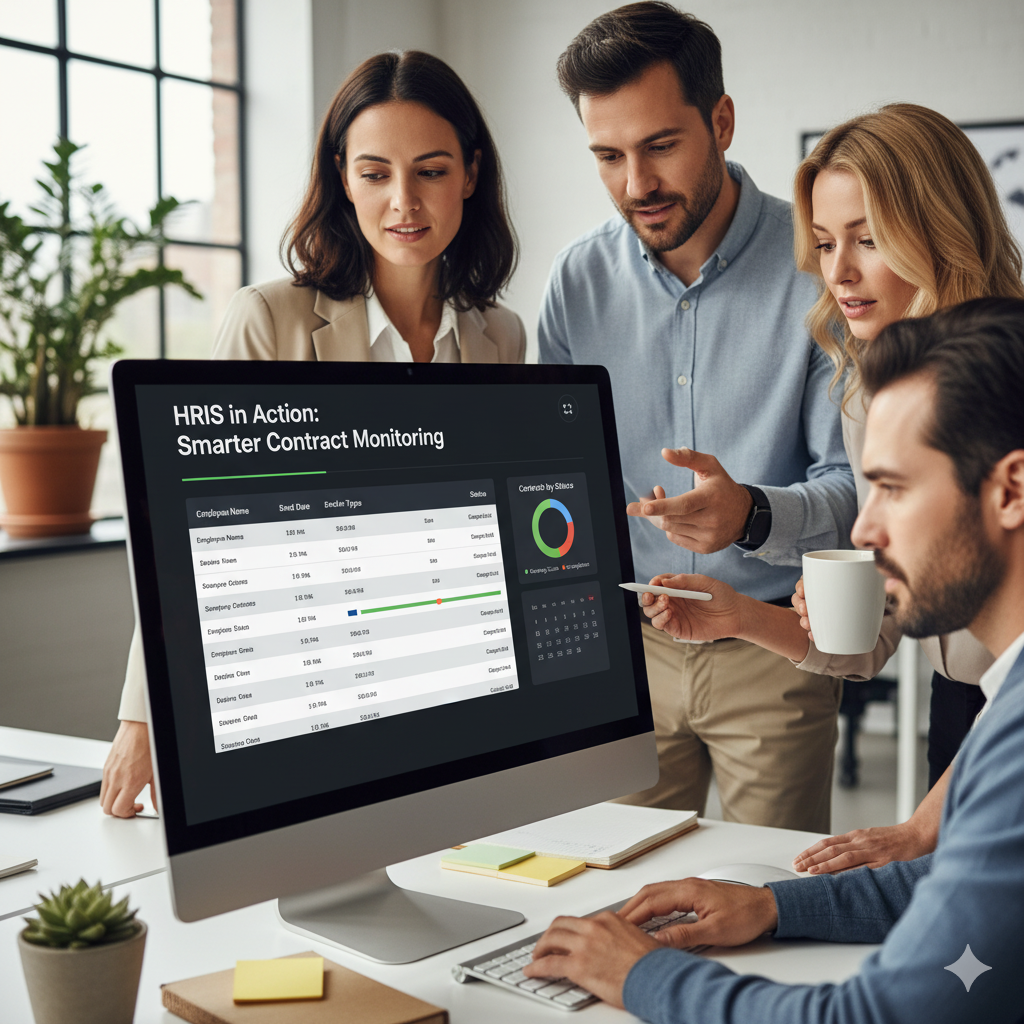Address
Kaypian, San Jose Del Monte City, Bulacan Philippines
Work Hours
Monday to Friday: 8AM - 6PM
Weekend: 10AM - 5PM
Address
Kaypian, San Jose Del Monte City, Bulacan Philippines
Work Hours
Monday to Friday: 8AM - 6PM
Weekend: 10AM - 5PM


Integrated HR. Accurate Payroll.


Integrated HR. Accurate Payroll.

In today’s fast-paced business world, HR teams juggle multiple employment contracts, project-based agreements, and renewals — all of which need constant monitoring.
Unfortunately, many organizations still rely on manual spreadsheets and email reminders, which make tracking contract timelines prone to delays and compliance risks.
Enter the Human Resource Information System (HRIS) — a centralized digital platform that automates and simplifies contract management and monitoring. With an HRIS, HR professionals can effortlessly track contract lifecycles, set automated alerts, and ensure every agreement stays compliant and on schedule.
This article explores how HRIS transforms contract monitoring into a smarter, data-driven process for modern HR teams.
Monitoring contracts manually is not only time-consuming but also risky. Here are some common challenges HR departments face:
🗂️ Scattered records across emails, folders, or paper files.
⏰ Missed renewal dates that result in compliance issues or lapses.
🧾 No centralized visibility on contract status and validity.
⚠️ Difficulty in auditing or tracking changes in contractual terms.
Such inefficiencies can lead to legal exposure, payroll discrepancies, and disrupted workforce planning — all of which cost time and money.
That’s why digital transformation through HRIS-based contract monitoring is now essential.
An HRIS acts as a single source of truth for all employment contracts, providing automation, analytics, and transparency. Let’s explore how it works:
All employee contracts — from onboarding to renewal — are stored securely in one HRIS database.
This eliminates the need for physical files and manual searching. HR teams can easily access, update, and manage contracts anytime.
✅ Benefit: Reduced paperwork, faster retrieval, and guaranteed data integrity.
HRIS systems allow you to set automated reminders for upcoming contract expirations, renewals, or compliance checks.
For instance, alerts can notify HR staff 30 or 60 days before a contract ends — giving teams enough time to act.
✅ Benefit: No more missed deadlines or renewal oversights.
With a dynamic HRIS dashboard, HR leaders can visualize contract statuses across departments.
At a glance, you can see:
Total active contracts
Contracts nearing expiration
Pending approvals
Completed or terminated agreements
✅ Benefit: Improved visibility and proactive decision-making.
When a contract is renewed, terminated, or extended, the HRIS automatically syncs with the payroll system to reflect changes in compensation or employment status.
It also updates workforce planning tools, ensuring alignment between staffing needs and contract timelines.
✅ Benefit: Seamless coordination between HR, finance, and operations.
Compliance is one of the most critical aspects of contract management.
An HRIS maintains a digital trail of every contract, including edits, renewals, and completion notices. This makes audits and inspections effortless.
✅ Benefit: Full compliance with labor laws, internal policies, and audit standards.
Modern HRIS platforms include analytic graphs and dashboards that visualize contract-related data.
These insights help HR teams make informed decisions such as:
📊 Examples of HRIS Contract Analytics:
By understanding these patterns, HR leaders can plan ahead for recruitment, renewals, and budgeting — turning raw contract data into strategic intelligence.
To maximize HRIS efficiency in contract monitoring, follow these best practices:
For modern HR teams, contract monitoring is no longer a manual task — it’s a strategic function that drives compliance, efficiency, and workforce stability.
By adopting an HRIS-based contract monitoring system, organizations can ensure every agreement is tracked, every alert is timely, and every decision is backed by data.
HRIS doesn’t just make contract management easier — it makes it smarter, faster, and future-ready.